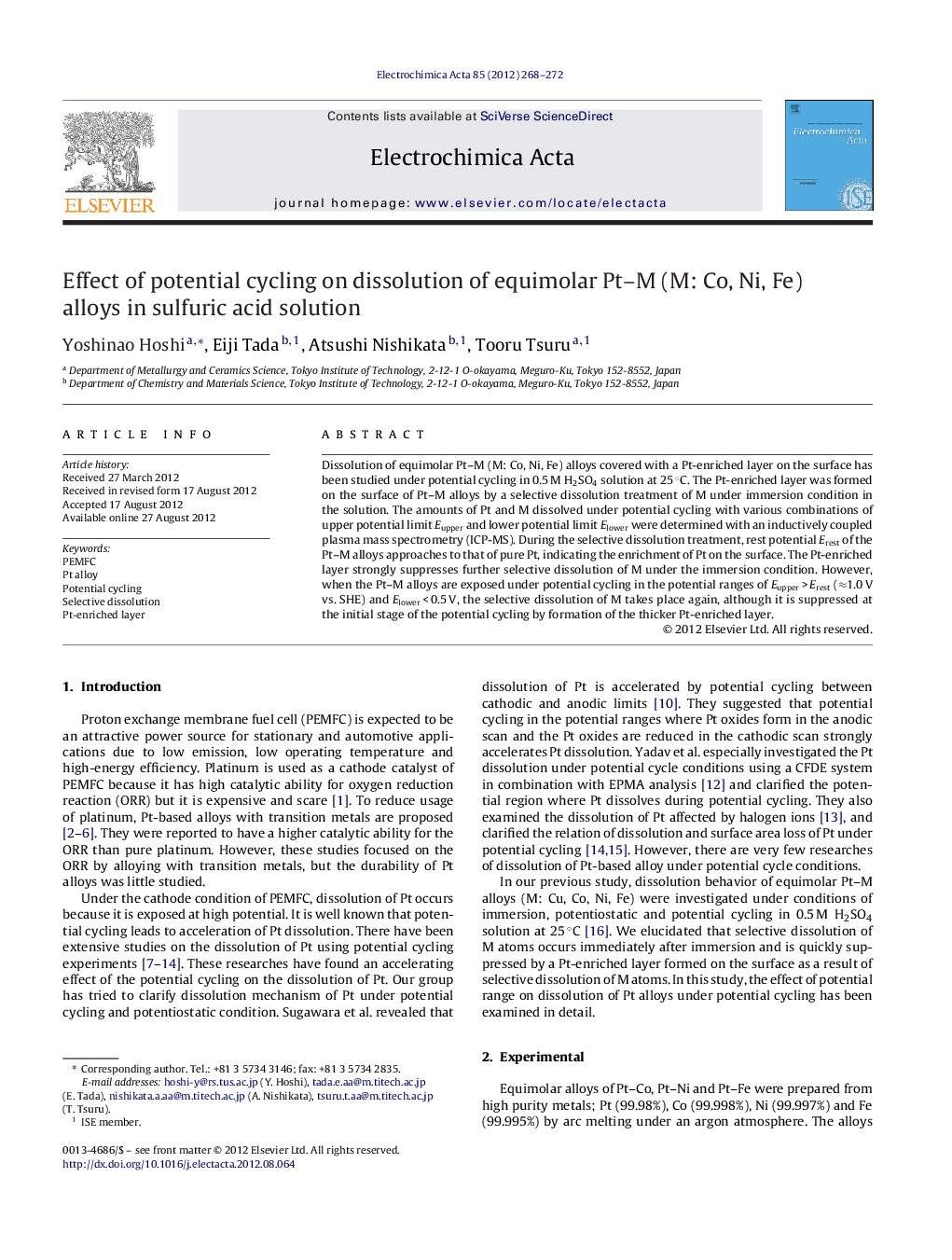| Article ID | Journal | Published Year | Pages | File Type |
|---|---|---|---|---|
| 187802 | Electrochimica Acta | 2012 | 5 Pages |
Dissolution of equimolar Pt–M (M: Co, Ni, Fe) alloys covered with a Pt-enriched layer on the surface has been studied under potential cycling in 0.5 M H2SO4 solution at 25 °C. The Pt-enriched layer was formed on the surface of Pt–M alloys by a selective dissolution treatment of M under immersion condition in the solution. The amounts of Pt and M dissolved under potential cycling with various combinations of upper potential limit Eupper and lower potential limit Elower were determined with an inductively coupled plasma mass spectrometry (ICP-MS). During the selective dissolution treatment, rest potential Erest of the Pt–M alloys approaches to that of pure Pt, indicating the enrichment of Pt on the surface. The Pt-enriched layer strongly suppresses further selective dissolution of M under the immersion condition. However, when the Pt–M alloys are exposed under potential cycling in the potential ranges of Eupper > Erest (≈1.0 V vs. SHE) and Elower < 0.5 V, the selective dissolution of M takes place again, although it is suppressed at the initial stage of the potential cycling by formation of the thicker Pt-enriched layer.
► The amount of dissolved ions from Pt alloys was determined with ICP-MS. ► The Pt-enriched layer is formed on the surface of Pt alloys by the immersion in 0.5 M H2SO4. ► In potential cycling, selective dissolution of M is negligible small when Eupper ≤ Erest. ► Dissolution of M and Pt is accelerated by potential cycling.
